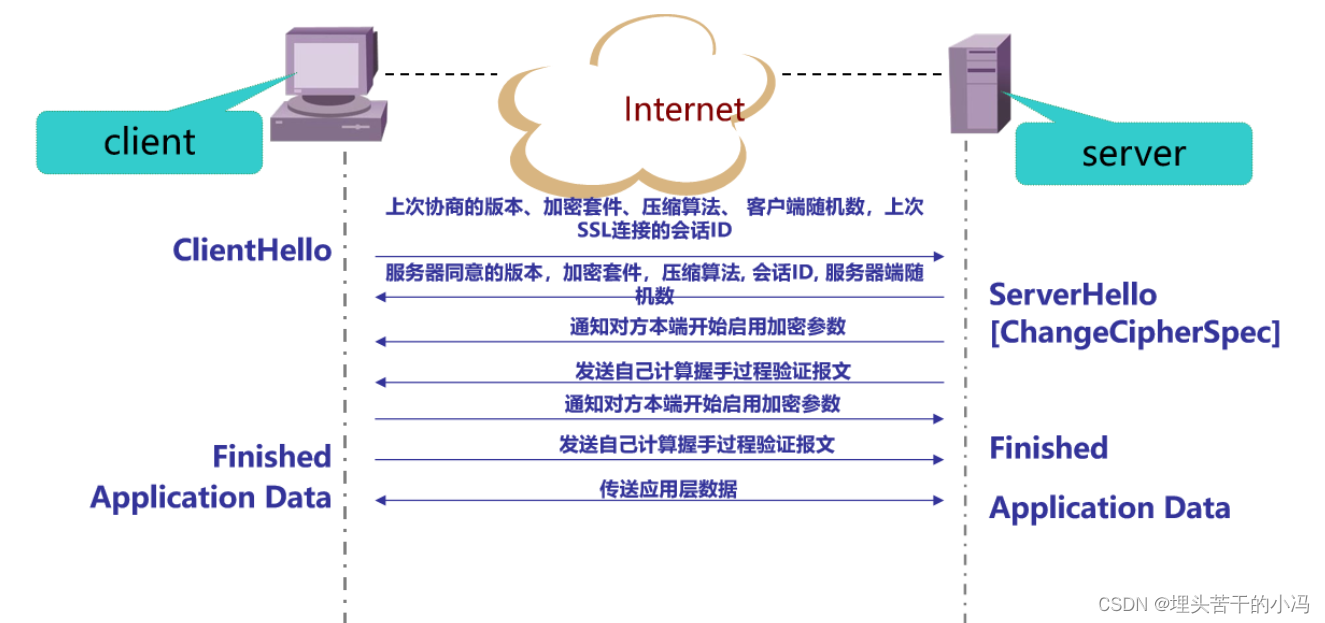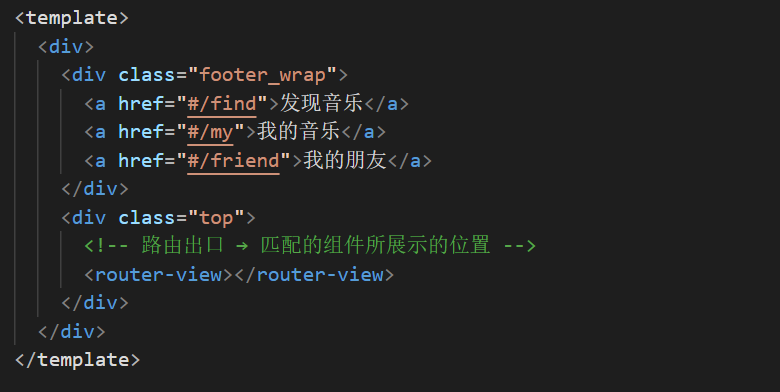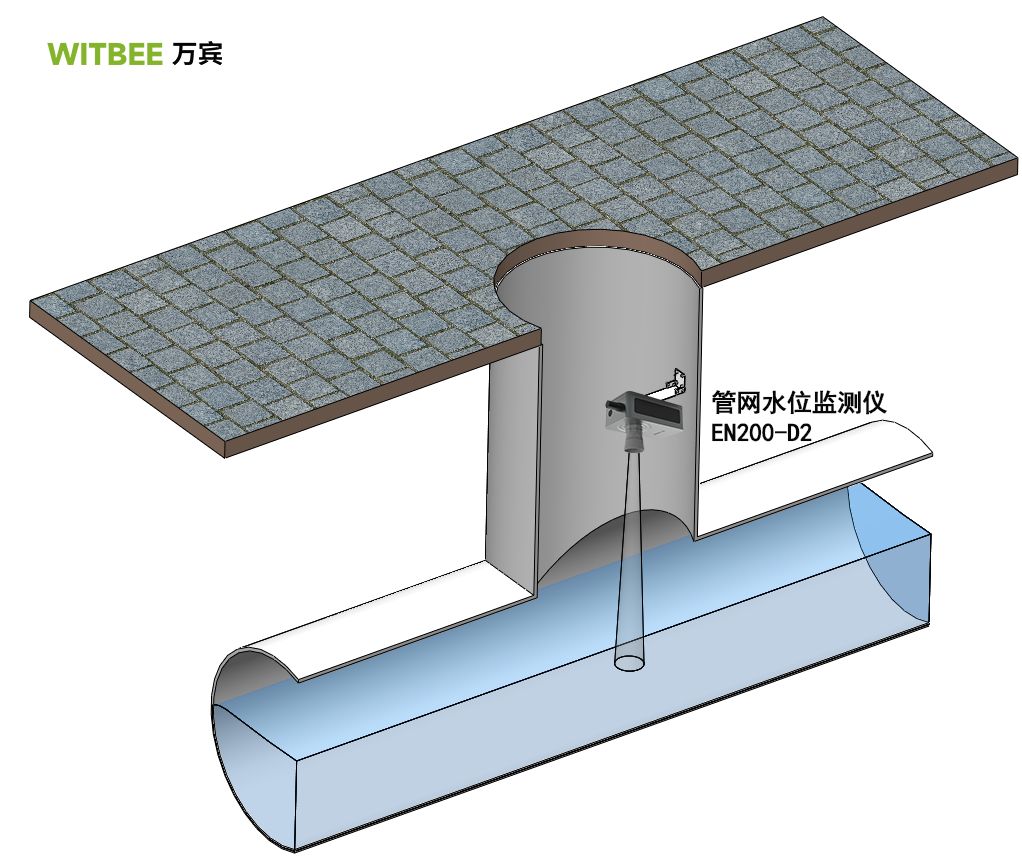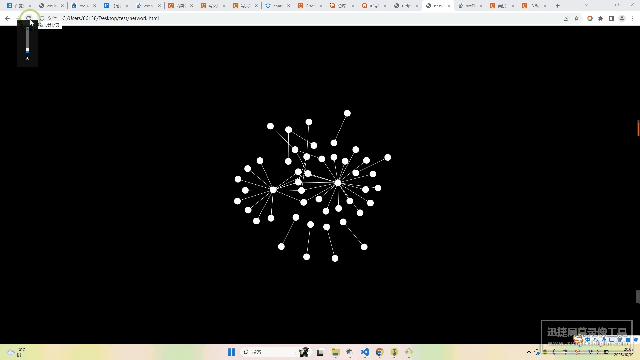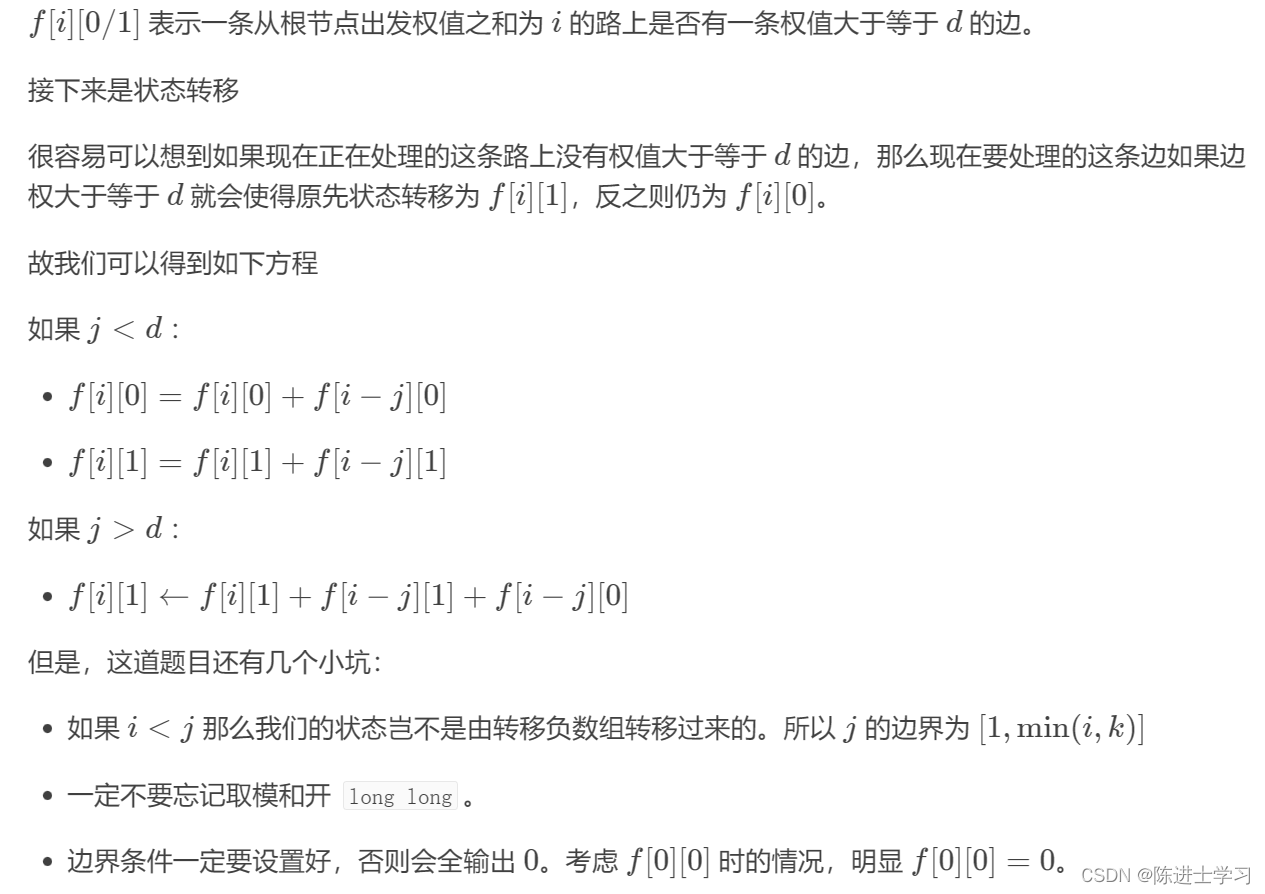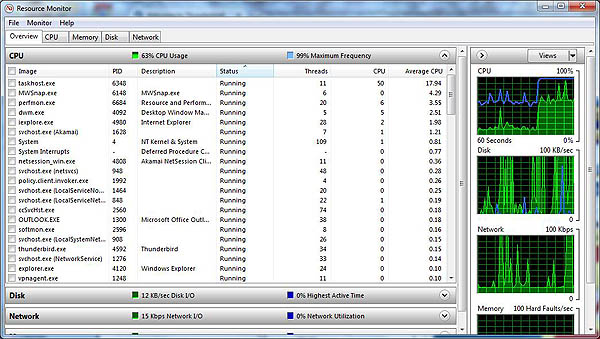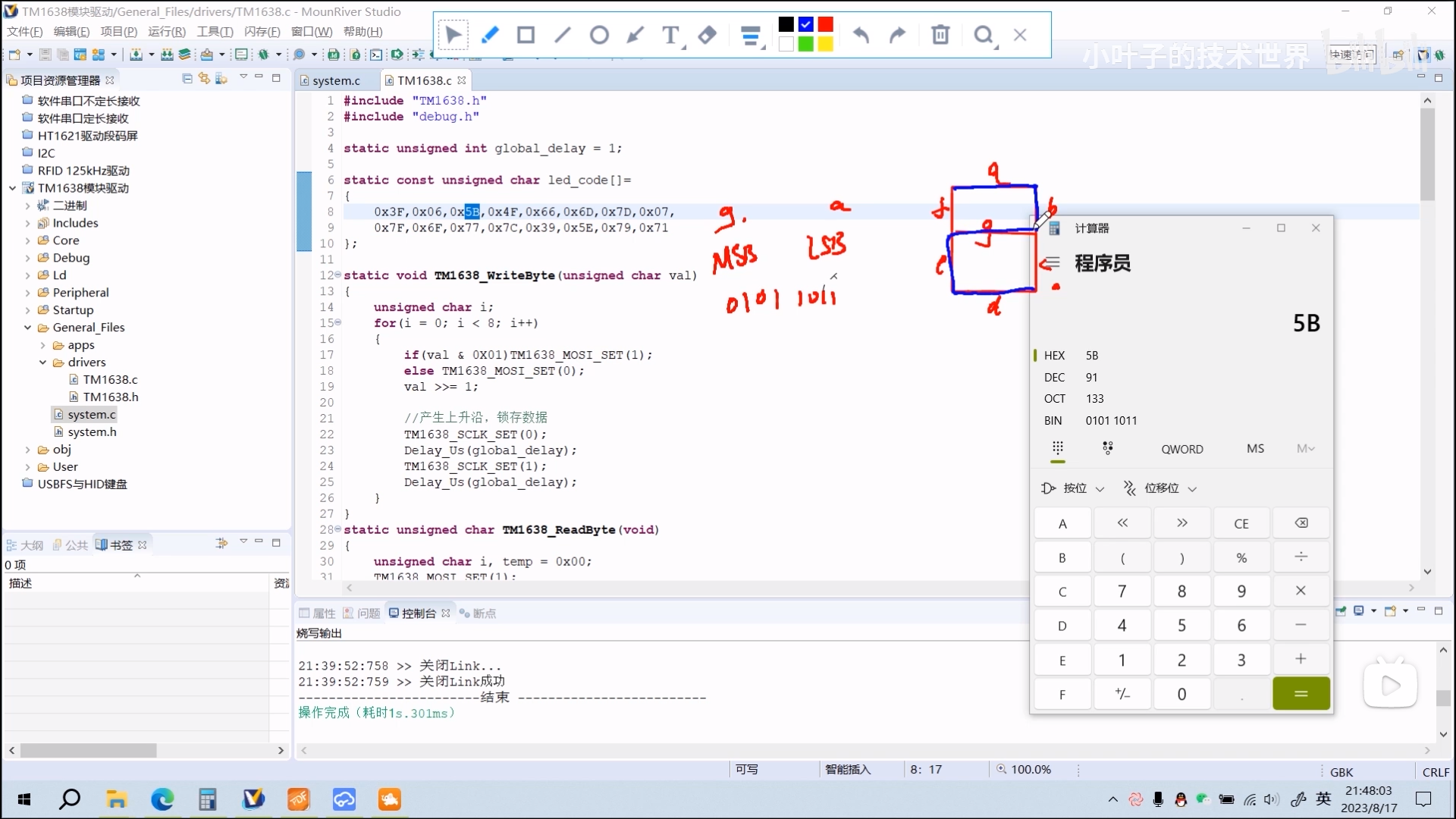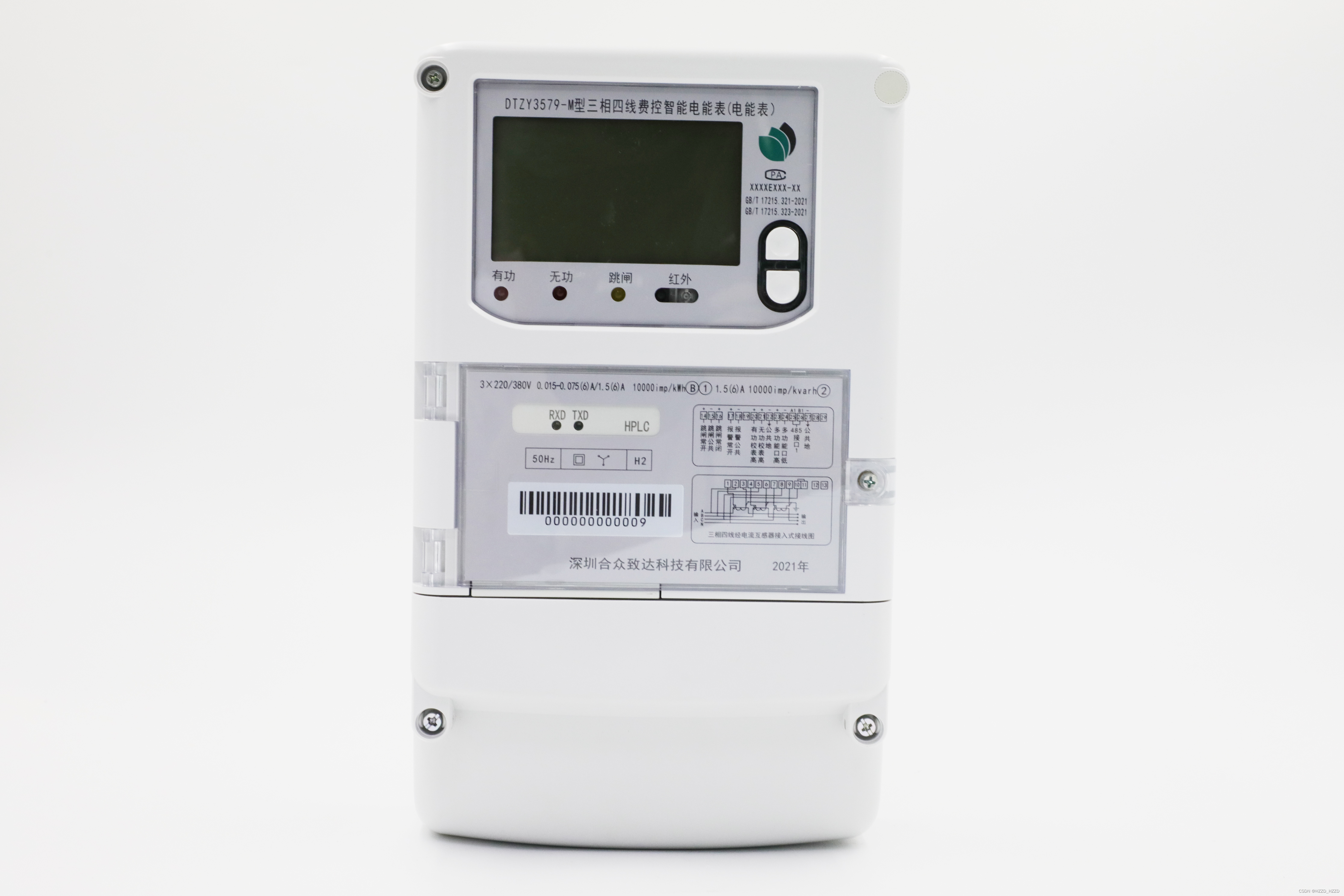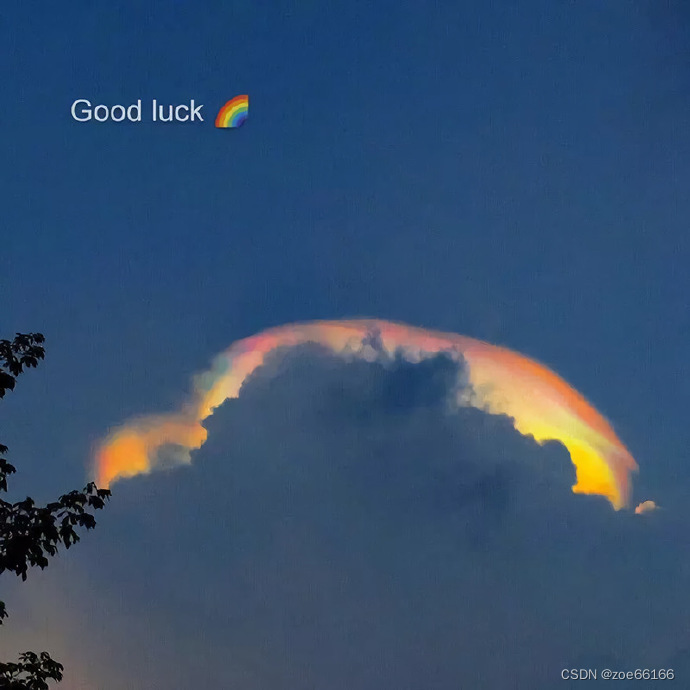研究背景:光合植被(PV)主要指绿色的叶片,而非光合植被(NPV)包括凋落物和茎等。利用遥感数据估算植被覆盖(FVC)主要有三种方法:1) 回归模型2)光谱混合物分析(SMA) 3) 数据驱动的模型。在这三种方法中,回归模型因其简单性、适应性和易于理解而成为估计 FVC 的常用方法。目前,已经开发了许多由近红外(NIR)和红(R)波段构建的光合植被指数(PVI)来提取植被覆盖度(FVC)。然而,这些指数通常在高植被覆盖度(FVC)水平下饱和。FVC <30%时,植被覆盖度(FVC)容易受到土壤背景的影响。为了更好的评估FVC,于是设计使用短波红外(SWIR)波段的各种非光合植被指数(NPVI)。然而,SWIR波段的光谱吸收特征对水很敏感。当绿色植被的比例超过30%时,使用SWIR波段很难估计非光合植被(NPV)生物量。红边(RE)波段形成的指数有利于监测植物的生理生化参数。Sentinel-2卫星在红边(RE)范围内有三个波段,这3个波段可能为估计植被覆盖度(FVC)开辟新的可能性。同时,许多因素(冠层结构、叶片光学特性、土壤背景)会影响冠层反射率。所以,应进一步探索这些因素对Sentinel-2波段的影响程度,以选择估计FPV(光合植被覆盖度) and FNPV(非光合植被覆盖度)的最佳波段。
研究目标:1)研究植被理化参数对PV和NPV冠层反射率的影响 2)采取新的RE波段前后使用VI估计FPV and FNPV的差异 3)评估4波段红边植被指数对FPV and FNPV的估计能力。
试验流程与方法:
1. 流程图:
首先,利用PROSAIL-PRO模型冠层光谱反射率;采用EFAST敏感性分析方法(FOI和TOI用于计算参数的灵敏度。FOI表示单个元素的贡献,而TOI表示每个参数与其他参数相互作用的贡献)。基于3个原始PVI和3个原始NPVI,选择出最佳红边波段的PVI和NPVI。建立模型并进行精度评估。
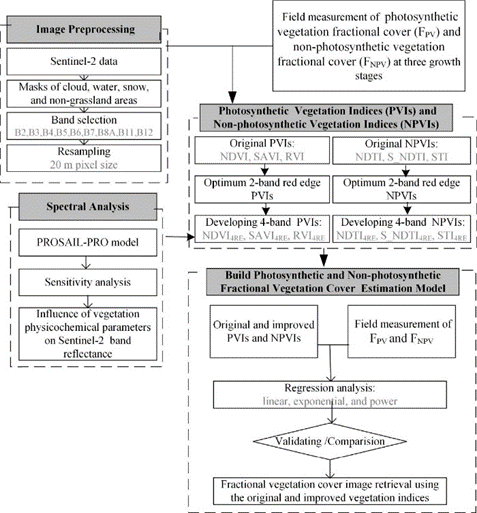
Fig 1. Workflow diagram for estimating photosynthetic and non-photosynthetic fractional vegetation cover based on vegetation indices.where R1 is a Sentinel-2 band reflectance at one CBC value, while R2 is the matching reflectance under another CBC value.
2. 公式的构造方法:
基于 NDVI、SAVI和RVI,结合波段相关性确定估算FPV and FNPV的最佳波段,使用RE3和RE2反射率的加权平均值替换NIR波段,而RE1和RE2反射率的加权平均值替换R波段。冠层结构和叶绿素的影响使用加权系数α和β来平衡。PV新公式:

NPV新公式:一个是SWIR1和SWIR2波段的加权,另一个是NIR和RE3波段的加权。这种组合可归因于在SWIR波段上NPV独特的木质纤维素吸收特性。此外,NPV在NIR波段附近的反射率高于裸土(BS),但在RE波段附近则相反。结合SWIR1、SWIR2、NIR和RE3条带是一种补偿策略,既能保持纤维素在SWIR波段中的吸收特性,又能促进NPV与BS的区分。

结果分析:
1. 干扰因素分析
与R波段相比,RE1波段受Cab的控制更大。LAI几乎完全贡献了RE3和NIR的反射率。
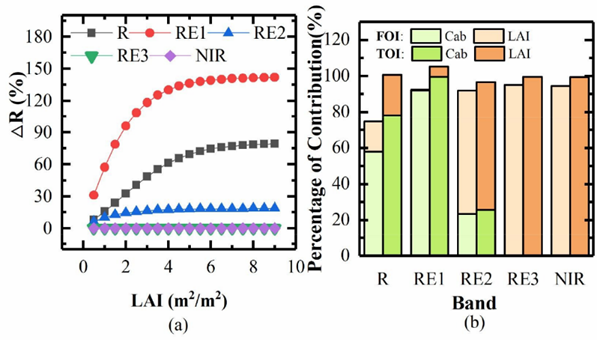
Fig 2. Influence of chlorophyll content (Cab) and LAI on PV canopy. (a) Relative change in band reflectance (ΔR) of the Sentinel-2 band caused by changing Cab ranging among 20 and 70 g/cm2 when LAI are different values. (b) Total-order indices (TOI) and first-order indices (FOI) are sensitivity indices used to investigate the effects of LAI and Cab on Sentinel-2 band reflectance.
随着含水量的增加,SWIR1和RE3的ΔR低于SWIR2。当LAI<5时,近红外的ΔR高于RE3波段。当LAI超过5时,SWIR2波段的ΔR超过近红外波段的ΔR。
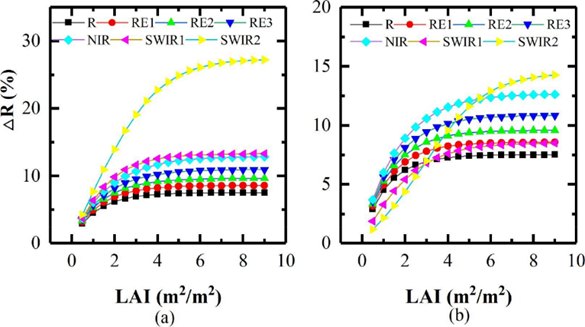
Fig 3. Contributions of LAI and carbon-based composition (CBC) to NPV canopy reflectance changes with CBC of 0.01 and 0.04 μg/cm2. (a) represents the relative change of the band reflectance (ΔR) at different LAI values when water content (Cw) is 0.01 g/cm2. (b) represents the ΔR at different LAI values when Cw is 0.04 g/cm2.
2. 建立最优4波段指数中参数α,β,γ的选择
'α'和“β”值范围从 0.0 到 1.0,步长为 0.1,对应的 R2通过4波段红边光谱指数与FPV进行回归分析得到。参数'α'表示RE3反射率的比例,而RE2反射率的比例由 (1-'a')表示。参数“β”表示R反射率的比例,而RE1反射率的比例由参数表示(1-'β').当 R2是最高的,对应的权重参数是最好的。从下图可以看出,在不同的季节,α,β,γ参数的值是不同的。
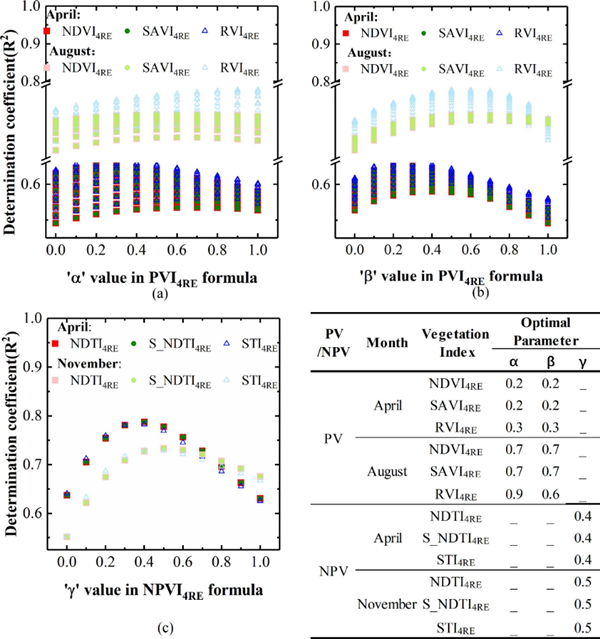
Fig 4. Determination coefficient (R2) are derived from the linear regression models between 4-band red edge photosynthetic vegetation indices (PVI4RE) and photosynthetic vegetation fractional cover (FPV) with a sequence (a) ′α′ and (b) ′β′ values. (c) represents the R2 derived from the linear regression model between the 4-band red edge non-photosynthetic vegetation indices (NPVI4RE) and the non-photosynthetic vegetation fractional cover (FNPV) with sequence ′γ′ values. The table shows the optimal weighting parameters for PVI4RE and NPVI4RE for different growth stages.
3. 原始植被指数和改进植被指数的比较
从R2结果可以看出无论在FNPV还是FPV,四波段的红边植被指数对FVC的拟合效果均有一定的提升。
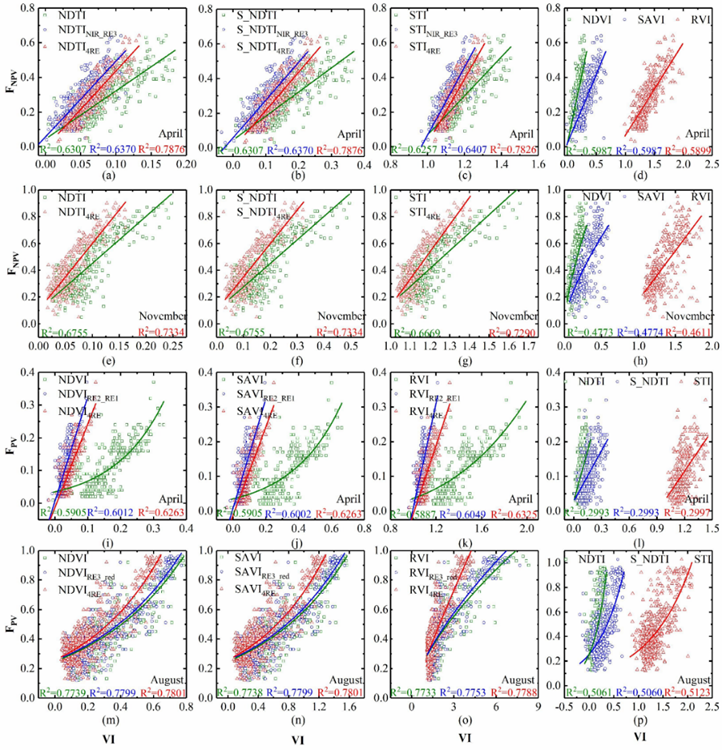
Fig 5. The top two rows of images demonstrate the best regression relationships between non-photosynthetic vegetation fractional cover and vegetation indices in April and November, respectively. The last two rows of images demonstrate the best regression relationships between photosynthetic vegetation fractional cover and vegetation indices in April and August, respectively.
4. 对于植被覆盖度效果的验证:
下图显示了不同指数的FVC估计的拟合验证结果,建立的4波段红边指数的RMSE最低。
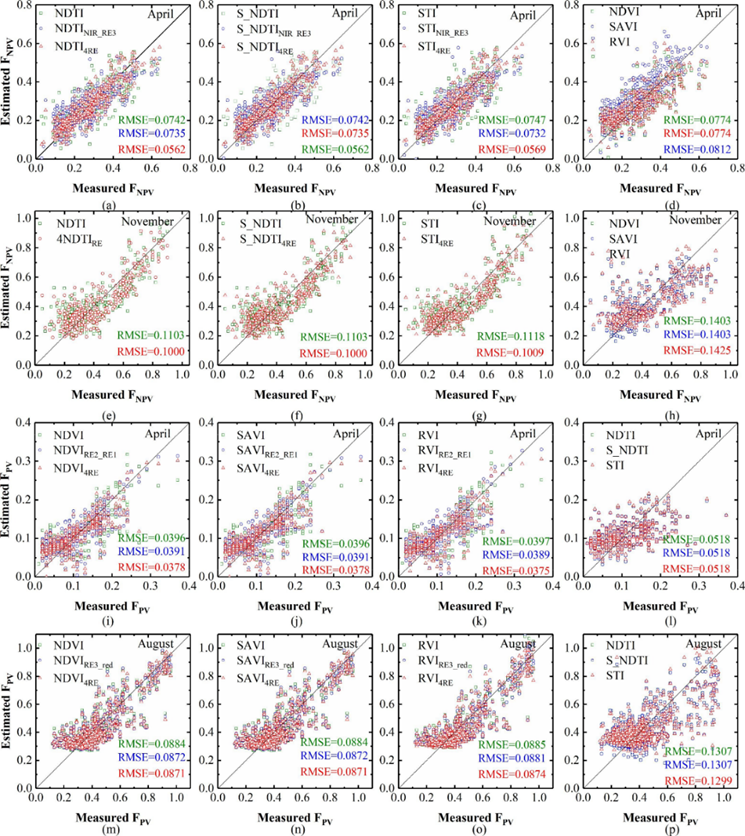
Fig 6. The top two rows of images demonstrate measured FNPV and estimated FNPV in April and November, respectively. The last two rows of images demonstrate measured FPV and estimated FPV in April and August, respectively.
研究结论:
对于PV来说, Cab对RE1波段的影响最大,而LAI对RE3、RE2和NIR波段的影响最大。SWIR波段对NPV的CBC敏感,但对NPV的Cw敏感。NIR和RE3波段对CBC也很敏感,但对Cw不太敏感。由RE1、RE2、RE3和R波段构成的4波段红边PVI可以进一步提高FPV估计精度。4波段红边NPVI结合了SWIR2、SWIR3、NIR和RE3波段,可实现最精确的FNPV估计。与现有的VI相比,新开发的VI可以在高FVC水平下缓解饱和,在低FVC水平下具有更高的灵敏度。然而,最佳加权参数因生长阶段而异,应根据不同的FVC对其进行选择。
参考文献 | Jiali Liu, Jianrong Fan, Chao Yang, Fubao Xu, Xiyu Zhang,Novel vegetation indices for estimating photosynthetic and non-photosynthetic fractional vegetation cover from Sentinel data,International Journal of Applied Earth Observation and Geoinformation,Volume 109,2022,102793,ISSN 1569-8432,https://doi.org/10.1016/j.jag.2022.102793.
本文来源于i智慧农业
